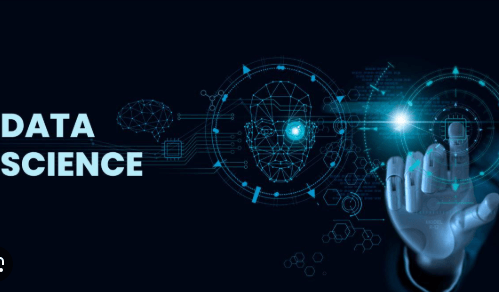Introduction
Embarking on a career in data science can feel like navigating through a maze. With so many domains, tools, and methods competing for your attention, knowing where to begin—and what to focus on—makes all the difference. A well-structured data science roadmap provides clarity: it guides you from foundational principles, through intermediate skills, into advanced topics and real-world applications. In this article, you’ll find a comprehensive, user-friendly roadmap built with EEAT (Expertise, Experience, Authority, Trust) principles, enriched by related (LSI) keywords for clarity and SEO effectiveness. Whether you’re a beginner or looking to sharpen your path, this guide helps you chart your own route into data science with confidence and purpose.
1. Understanding the Landscape: What Is Data Science?
At its core, data science is about extracting actionable insights from data using statistical, computational, and domain knowledge. It blends machine learning, data analytics, data engineering, and domain expertise.
Key roles in this landscape include:
- Data Analyst
- Data Scientist
- Machine Learning Engineer
- Data Engineer
- AI / Deep Learning Specialist
Each role has overlaps and distinctions; your roadmap should adapt based on which one you aim for.
To begin, it’s essential you grasp the data science lifecycle: from data collection, cleaning, exploratory analysis, feature engineering, modeling, evaluation, deployment, and monitoring.
2. Core Foundations: Math, Statistics & Programming
Before diving into models and tools, you must build a solid foundational base. These are essential pillars in your roadmap.
2.1 Mathematics & Statistics
- Probability theory (distributions, conditional probability)
- Descriptive statistics & inferential statistics (mean, variance, hypothesis testing)
- Linear algebra (vectors, matrices, eigenvalues)
- Calculus (differentiation, partial derivatives, optimization)
- Bayesian thinking and sampling
A strong grasp here enables you to understand why models work (not just how).
2.2 Programming & Tools
- Choose a primary language (Python is most common; R is used in academia)
- Key Python libraries: NumPy, pandas, Matplotlib / Seaborn, SciPy
- Version control with Git
- Working with Jupyter notebooks
- Basic understanding of SQL and relational databases
Hands-on practice is critical. Start small—load datasets, compute summary statistics, plot basic graphs.
3. Data Wrangling & Exploratory Data Analysis (EDA)
Once you can program and understand data basics, you need to transform and explore real data.
3.1 Data Cleaning & Wrangling
- Handling missing values, outliers, duplicates
- Data types, conversions, categoricals
- Data imputation strategies
- Aggregations, merges, joins, data reshaping
3.2 Exploratory Data Analysis
- Summary statistics, correlations
- Visualizations: histograms, boxplots, scatter plots, heatmaps
- Univariate, bivariate, multivariate plotting
- Detecting patterns, distributions, anomalies, trends
This stage helps you understand the data deeply, and discover hypotheses to test in modeling.
4. Feature Engineering & Preprocessing
Raw data rarely works directly in modeling. Feature engineering is about converting raw inputs to model-friendly signals.
- Encoding categorical variables (one-hot, ordinal, embeddings)
- Scaling, normalization
- Creating derived features (ratios, interactions, domain insights)
- Feature selection methods (filter, wrapper, embedded)
- Handling time series features, lag features, rolling windows
Good feature engineering often matters more than fancy algorithms.
5. Machine Learning: Classical Algorithms & Modeling
At this stage, you begin applying predictive modeling on cleaned data.
5.1 Supervised Learning
- Linear regression, logistic regression
- Decision trees, random forests
- Support Vector Machines, k-nearest neighbors
- Ensemble methods: boosting (XGBoost, LightGBM), bagging
5.2 Unsupervised Learning
- Clustering (k-means, hierarchical clustering, DBSCAN)
- Dimensionality reduction (PCA, t-SNE, UMAP)
- Association rules, anomaly detection
5.3 Model Evaluation & Validation
- Train / test split, cross validation
- Metrics: accuracy, precision, recall, F1, ROC-AUC
- Overfitting, underfitting, bias-variance tradeoff
- Hyperparameter tuning (grid search, random search, Bayesian optimization)
6. Advanced Topics: Deep Learning, NLP, Computer Vision
Once you’re comfortable with machine learning, exploring advanced domains opens many opportunities.
6.1 Deep Learning & Neural Networks
- Fundamentals: perceptron, backpropagation
- Feedforward networks, CNNs (for images), RNNs / LSTMs / Transformers (for sequences)
- Frameworks: TensorFlow, PyTorch
- Transfer learning, fine tuning
6.2 Natural Language Processing (NLP)
- Text preprocessing: tokenization, stemming, lemmatization
- Word embeddings (Word2Vec, GloVe), contextual embeddings (BERT, GPT)
- Sequence models, language models, text classification, summarization
6.3 Computer Vision
- Convolutional neural networks, object detection, segmentation
- Pretrained models (ResNet, EfficientNet, YOLO, Mask R-CNN)
Also, stay updated with generative AI, transformer architectures, and foundation models.
7. Production & Deployment: Bringing Models to Real Usage
Building models is only half the journey. Putting them into use is what matters.
- Building APIs (Flask, FastAPI)
- Containerization (Docker)
- Serving models (TensorFlow Serving, TorchServe)
- Cloud platforms (AWS, Azure, GCP)
- MLOps practices: model versioning, monitoring, drift detection, retraining pipelines
This is where data science meets software engineering.
8. Big Data, Data Engineering & Pipelines
To work with large datasets or streaming data, you need to know data engineering.
- Data storage: data warehouses, data lakes
- Distributed computing: Hadoop, Spark
- ETL / ELT pipelines, orchestration (Airflow, Prefect)
- Streaming data (Kafka, Flink)
- Real-time analytics and batch processing
Understanding the infrastructure ensures your models can scale to production demands.
9. Domain Knowledge & Communication Skills
Great models blind to domain needs often fail. To excel:
- Gain domain knowledge in your field (finance, healthcare, marketing, etc.)
- Learn to communicate results effectively: dashboards, storytelling, visualizations
- Use tools like Tableau, Power BI, or Dash/Streamlit
Also, sharpen soft skills: collaboration, problem decomposition, critical thinking.
10. Building Portfolio & Real Projects
Hands-on experience is your strongest credential.
- Work on end-to-end projects (from data ingestion to deployment)
- Contribute to open source or Kaggle competitions
- Publish blogs, notebooks, and share on GitHub
- Present your work (pipelines, visualizations, model explanations)
Your portfolio demonstrates your journey, expertise, and creativity to employers and peers.
11. Continuous Learning & Staying Updated
Data science evolves rapidly. To remain competitive:
- Read research papers, blogs, newsletters
- Participate in communities (forums, Slack, Discord, meetups)
- Attend conferences (NeurIPS, ICML, KDD)
- Explore new fields (causal inference, reinforcement learning, graph neural networks)
A strong learning habit is part of your ongoing roadmap.
12. Sample Year-Wise Roadmap (Beginner → Intermediate → Advanced)
| Stage | Focus Areas | Sample Goals |
|---|---|---|
| Months 1–3 | Math, Python basics, data manipulation | Complete small Kaggle datasets, build simple EDA reports |
| Months 4–6 | Classical ML & modeling | Build predictive models, tune parameters, compare algorithms |
| Months 7–9 | Advanced topics (deep learning, NLP) | Train CNNs / Transformer models on real datasets |
| Months 10–12 | Deployment & engineering | Deploy models as APIs, build pipelines, host on cloud |
| Ongoing | Big data, new techniques, continuous portfolio | Master Spark, MLOps, explore research trends |
This timeline is flexible; your pace may differ based on background.
13. How to Adapt the Roadmap Based on Your Goals
- If you prefer analytics / business insights: focus more on visualization, statistics, dashboarding, explanatory models
- If your interest is ML/AI research: dive deeper into theory, neural architectures, papers, open research problems
- If your role is engineering-oriented: prioritize data pipelines, cloud, scalability, performance
- If you target a specific domain (e.g. bioinformatics, finance): mix domain classes and specialized data sources
Always map your roadmap to your career focus, while staying grounded in the core components above.
5 Frequently Asked Questions (People Also Ask)
- What is the best order to follow in a data science roadmap?
Start with math & statistics, then programming, then data exploration + feature engineering, followed by modeling, advanced topics, deployment, and continuous improvement. - How long does it take to complete a data science roadmap?
It depends on your starting point and time commitment, but many progress from beginner to intermediate in 6–12 months with consistent daily or weekly study. - Do I need a degree to follow this roadmap?
No. What matters more are skills, projects, portfolio, and experience. A degree may help, but many data scientists are self-taught or come from non-CS fields. - Which tools or languages should I learn first?
Python is widely recommended, with libraries like pandas, NumPy, scikit-learn. Also, SQL is essential. Later, you add TensorFlow / PyTorch, Spark, tools like Docker and cloud platforms. - Can I specialize in just one area (e.g. NLP) and skip parts of the roadmap?
You can emphasize one domain, but you still need foundational skills (math, programming, data handling). Skipping too much may leave gaps in your understanding or limit flexibility.
Conclusion
A data science roadmap is your compass through a complex, evolving field. With structured progression—from foundational mathematics and programming, through data cleaning and exploratory analysis, into modeling, advanced topics, deployment, and domain specialization—you can steadily build competence and confidence. Along the way, working on real projects, curating a portfolio, gaining soft skills, and engaging in continuous learning position you not only as a capable practitioner, but as a trusted, credible expert (aligned with EEAT principles).
The journey isn’t short or linear, but it’s navigable. Use this roadmap as a flexible guide: adapt it to your goals (analytics, research, engineering, domain-specific) and pace yourself. Embrace experimentation, failure, and iteration. Your consistency, curiosity, and dedication will carry you forward. With persistence, you can enter fields like machine learning, AI, NLP, and beyond—and produce real impact through data. Start today, iterate your roadmap, and keep moving forward.





 Top 3 Reasons Your Jewelry Repair Store Needs a POS System
Top 3 Reasons Your Jewelry Repair Store Needs a POS System